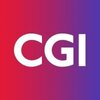Filter interviews by
Virtusa Consulting Services Senior Business Analyst Interview Questions and Answers
Virtusa Consulting Services Senior Business Analyst Interview Experiences
2 interviews found
(2 Questions)
- Q1. What is NFR....
- Ans.
NFR stands for Non-Functional Requirements, which are criteria that define how a system should behave, rather than specific features.
NFRs focus on aspects like performance, security, usability, scalability, and reliability.
They are often defined in terms of constraints or quality attributes.
Examples of NFRs include response time, availability, data privacy, and regulatory compliance.
- Q2. What is agile......
- Ans.
Agile is a project management methodology that emphasizes flexibility, collaboration, and continuous improvement.
Agile focuses on delivering value to customers through iterative development and frequent feedback.
It promotes adaptive planning, evolutionary development, early delivery, and continuous improvement.
Agile teams work in short iterations called sprints, typically 2-4 weeks long, to deliver working software.
Key...
Skills evaluated in this interview
I applied via Naukri.com and was interviewed in Feb 2022. There were 5 interview rounds.

(1 Question)
- Q1. Previous job experience
(1 Question)
- Q1. How do you manage stakeholders or business? How do you gather requirements?
- Ans.
I manage stakeholders by building relationships and understanding their needs. I gather requirements through active listening and documentation.
Identify key stakeholders and their needs
Build relationships and establish trust
Actively listen to their requirements and concerns
Document requirements and communicate changes
Manage expectations and provide regular updates
Use tools such as surveys, interviews, and workshops to ...
(1 Question)
- Q1. General questions about me
(1 Question)
- Q1. What are your Salary expectations
Interview Preparation Tips
Senior Business Analyst Jobs at Virtusa Consulting Services
Top trending discussions






Interview questions from similar companies

(2 Questions)
- Q1. Not applicable. waiting for interview
- Q2. Not applicable waiting for interview

(3 Questions)
- Q1. Self introduction
- Q2. Simple question
- Q3. Domain questions

I applied via Referral and was interviewed in May 2023. There were 4 interview rounds.

Basic aptitude test with time limit
Case study to create RFP response- for BA role
(2 Questions)
- Q1. Agile, scrum, real-life experiences, client handling, estimation techniques, documentation, sprint planning and grooming, RTM, SDLC.
- Q2. Agile, Requirement elicitation, techniques,


(2 Questions)
- Q1. 1.Walkthrough of your profile. 2.Know about the company
- Q2. 2.What do you know about the company

I applied via Naukri.com and was interviewed before Sep 2022. There were 4 interview rounds.

(1 Question)
- Q1. IT is related to Life Insurance domain, Business analysis, project management and on SQL.
(1 Question)
- Q1. All related to project management
(1 Question)
- Q1. All about salary negotiation

I applied via Naukri.com and was interviewed in Apr 2021. There were 3 interview rounds.
Interview Questionnaire
1 Question
- Q1. Experience as Per JD has been validated
Interview Preparation Tips

Senior Business Analyst Interview Questions & Answers
Publicis Sapientposted on 10 Feb 2017
I was interviewed in Dec 2016.
Interview Questionnaire
21 Questions
- Q1. Tell me about yourself?
- Q2. What are the documents that you had to create during the process
- Ans.
Various documents are created during the business analysis process.
Business requirements document (BRD)
Functional requirements document (FRD)
Use case document
Process flow diagrams
Data flow diagrams
User stories
Test plans
Training materials
Project charter
Risk assessment document
- Q3. What do you put in BRD
- Q4. What do you put in FRD
- Ans.
FRD (Functional Requirements Document) includes detailed specifications of the functional requirements of a system.
FRD includes a description of the system's functionality and features.
It outlines the specific requirements that the system must meet.
It includes use cases, user stories, and functional specifications.
FRD may also include non-functional requirements such as performance, security, and usability.
It serves as...
- Q5. Can you describe the difference between FRD and BRD?
- Ans.
FRD and BRD are both documents used in the software development process, but they serve different purposes.
FRD stands for Functional Requirements Document and describes the functional requirements of a software system.
BRD stands for Business Requirements Document and outlines the business needs and objectives that the software system should fulfill.
FRD focuses on the specific functionalities and features of the softwar...
- Q6. What is a Requirement creep?
- Ans.
Requirement creep refers to the continuous addition of new requirements during the development process.
Requirement creep occurs when new features or functionalities are added to a project without proper evaluation or consideration of the impact on the project timeline, budget, and resources.
It often happens due to poor communication, lack of clear project scope, or changing business needs.
Requirement creep can lead to ...
- Q7. What are the different meetings that happen in Agile style development?
- Ans.
Different meetings in Agile style development include daily stand-up, sprint planning, sprint review, and retrospective.
Daily stand-up: A short daily meeting where team members discuss their progress, plans, and any obstacles.
Sprint planning: A meeting at the beginning of each sprint to determine the work to be done and set priorities.
Sprint review: A meeting at the end of each sprint to demonstrate completed work to s...
- Q8. What would be duration of a sprint and who leads it?
- Ans.
The duration of a sprint is typically 2-4 weeks and it is led by the Scrum Master or Agile Coach.
A sprint is a time-boxed iteration in Agile development.
The duration of a sprint is determined by the team, but it is usually between 2-4 weeks.
During a sprint, the team works on a set of prioritized user stories or tasks.
The Scrum Master or Agile Coach is responsible for leading the sprint and ensuring that the team follow...
- Q9. If you had to accommodate a CR in agile how would you do so?
- Ans.
To accommodate a CR in agile, the business analyst should follow a process that includes evaluating the impact, prioritizing, estimating effort, and incorporating the change into the sprint.
Evaluate the impact of the change request on the project scope, timeline, and resources.
Prioritize the change request based on its urgency and importance.
Estimate the effort required to implement the change and communicate it to the...
- Q10. What tools do you use to track your projects?
- Ans.
I use a combination of project management software, spreadsheets, and communication tools to track my projects.
Project management software: I utilize tools like Jira, Trello, or Asana to create and manage project tasks, assign responsibilities, and track progress.
Spreadsheets: I use Excel or Google Sheets to create project timelines, track milestones, and monitor project budgets.
Communication tools: I rely on tools lik...
- Q11. Do you create DFD?
- Ans.
Yes, as a Senior Business Analyst, I create DFDs (Data Flow Diagrams) to visually represent the flow of data within a system.
DFDs are used to analyze and document the processes, inputs, outputs, and data flows within a system.
They help in understanding the system's architecture and identifying potential areas for improvement or optimization.
DFDs can be created using various tools like Microsoft Visio, Lucidchart, or ev...
- Q12. Which document do you put the DFD?
- Ans.
DFD is typically documented in a Data Flow Diagram document.
DFD is a visual representation of how data flows through a system.
It shows the inputs, processes, and outputs of a system.
DFD can be included in a requirements document or a system design document.
It is important to keep the DFD up-to-date as the system evolves.
Examples of tools used to create DFDs include Microsoft Visio and Lucidchart.
- Q13. Who is a stake holder and how do you classify them?
- Ans.
Stakeholders are individuals or groups who have an interest or influence in a project or organization.
Stakeholders can include employees, customers, suppliers, shareholders, government agencies, and community members.
They can be classified into internal stakeholders (e.g., employees, shareholders) and external stakeholders (e.g., customers, suppliers).
Stakeholders can also be categorized based on their level of influen...
- Q14. Any questions for me?
- Q15. What technologies you have worked on?
- Ans.
I have worked on various technologies including data analysis tools, project management software, and database management systems.
Data analysis tools: Excel, Tableau, Power BI
Project management software: JIRA, Trello
Database management systems: SQL Server, Oracle
Programming languages: Python, R
Business intelligence tools: SAP BusinessObjects, QlikView
- Q16. What do you know about AEM?
- Ans.
AEM is a content management system used for creating and managing digital content.
AEM stands for Adobe Experience Manager.
It is a comprehensive content management system that allows users to create, manage, and deliver digital content across multiple channels.
AEM provides a user-friendly interface for content creation and editing, with features like drag-and-drop functionality and in-context editing.
It offers robust ca...
- Q17. What CMS tools have you used?
- Ans.
I have experience with various CMS tools.
I have used WordPress, Drupal, and Joomla for website content management.
I have also worked with Adobe Experience Manager (AEM) for enterprise-level CMS.
I am familiar with HubSpot CMS for inbound marketing purposes.
I have utilized Contentful and Prismic for headless CMS implementations.
Additionally, I have experience with Shopify and WooCommerce for e-commerce CMS solutions.
- Q18. How is Magento CMS tool different from WordPress
- Ans.
Magento CMS is an e-commerce platform while WordPress is a content management system.
Magento is specifically designed for e-commerce websites, while WordPress is more versatile and can be used for various types of websites.
Magento offers advanced features for managing products, inventory, and payments, while WordPress focuses more on content creation and management.
Magento has a steeper learning curve and requires tech...
- Q19. What do you know about Sapient?
- Q20. Where do you see yourself in 5 years time?
- Q21. Expected CTC and Joining date?
Skills evaluated in this interview

I was interviewed in Nov 2022.

(2 Questions)
- Q1. Tell me about your previous experience ?
- Q2. Brief me about your day to day at work ?
(2 Questions)
- Q1. What do you know about our company ?
- Q2. Are you ready to learn new skillsets in our company ?
(2 Questions)
- Q1. Where do you see yourself in 5 years ?
- Q2. Why you want to join us ?
(1 Question)
- Q1. What is your Salary Expectation
Interview Preparation Tips
Virtusa Consulting Services Interview FAQs
Tell us how to improve this page.
Virtusa Consulting Services Interviews By Designations
- Virtusa Consulting Services Associate Engineer Interview Questions
- Virtusa Consulting Services Software Engineer Interview Questions
- Virtusa Consulting Services Software Developer Interview Questions
- Virtusa Consulting Services Lead Consultant Interview Questions
- Virtusa Consulting Services Associate Software Engineer Interview Questions
- Virtusa Consulting Services Senior Consultant Interview Questions
- Virtusa Consulting Services Associate Consultant Interview Questions
- Virtusa Consulting Services Consultant Interview Questions
- Show more
Interview Questions for Popular Designations
- Business Analyst Interview Questions
- Business Development Executive Interview Questions
- Business Development Manager Interview Questions
- Business Development Associate Interview Questions
- Business Associate Interview Questions
- Business Development Interview Questions
- Business Executive Interview Questions
- Business Manager Interview Questions
- Show more
Virtusa Consulting Services Senior Business Analyst Interview Process
based on 2 interviews
Interview experience
Senior Business Analyst Interview Questions from Similar Companies
Fast track your campus placements

Virtusa Consulting Services Senior Business Analyst Reviews and Ratings
based on 9 reviews
Rating in categories
|
Senior Consultant
4k
salaries
| ₹8 L/yr - ₹30 L/yr |
|
Consultant
3.3k
salaries
| ₹6 L/yr - ₹21 L/yr |
|
Lead Consultant
3.3k
salaries
| ₹10.5 L/yr - ₹36 L/yr |
|
Software Engineer
3.3k
salaries
| ₹2.5 L/yr - ₹13 L/yr |
|
Associate Consultant
2.8k
salaries
| ₹4.6 L/yr - ₹15.4 L/yr |

Cognizant

TCS

Infosys

Accenture
- Home >
- Interviews >
- Virtusa Consulting Services Interview Questions >
- Virtusa Consulting Services Senior Business Analyst Interview Questions















